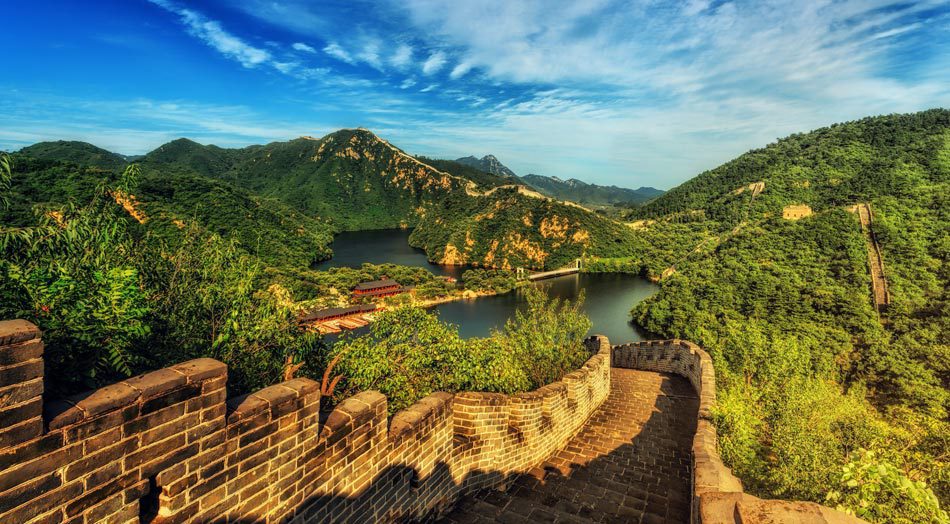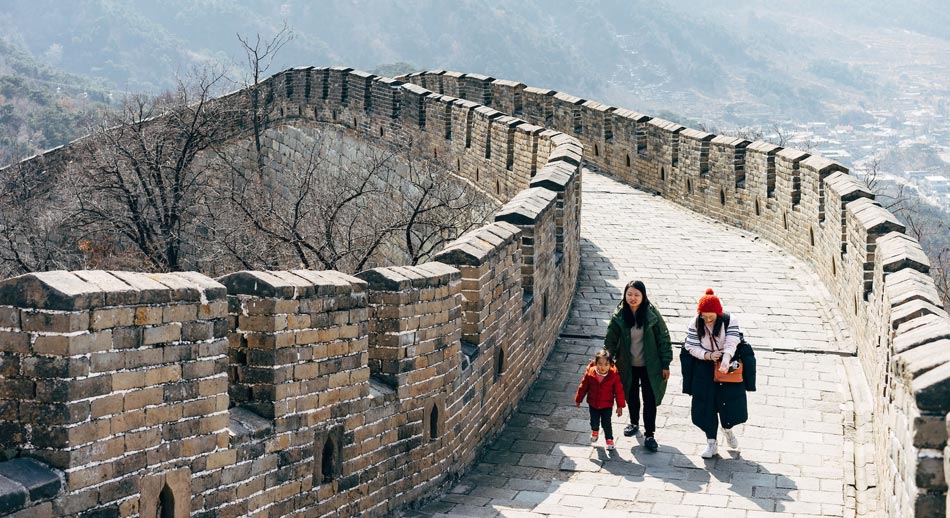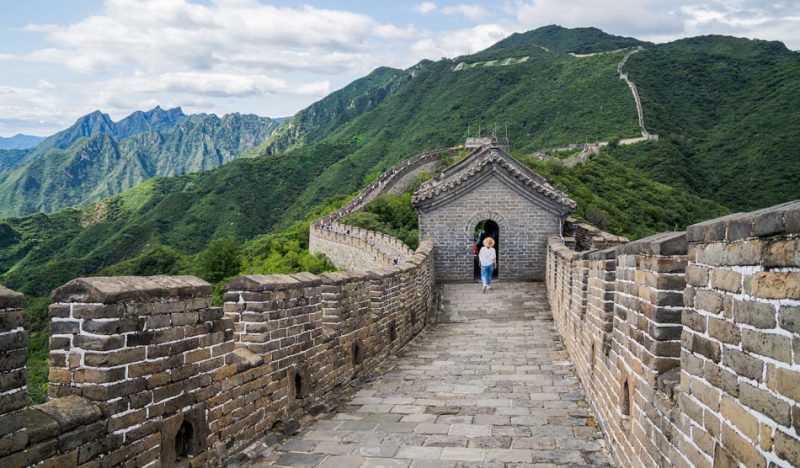The Great Wall of China snakes through 13,000 miles from snow-covered deserts in the west all the way to the Yellow Sea. But have you ever wondered why the Wall was built in the first place? Or, where was the need to build such a massive structure?
A Remarkable Architectural Feat
As we dig into history, you will be surprised to learn that the Wall was built over a span of 2000 years starting in the 7th century BC. The Chinese rulers at that time were intimidated by the sudden attacks of blood-thirsty, horse-riding warriors who were notorious plunderers and direct descendants of the formidable and invincible Genghis Khan and the Mongol tribe who were out to conquer the entire world at the cost of complete destruction. Khan is infamous throughout history for his ruthless military tactics. He was successful in spreading fear and panic among the ruling dynasties at that time.
The Mongol and the Manchu tribes launched unforeseen raids and invasions on China from the north. The Chinese rulers were prompted to put up a strong, defensive wall as a military fortification against these aggressors. The tribes also threatened China’s stability and way of life as they arrived unannounced in large unruly groups causing large-scale demolition and massive destruction resulting in human slaughtering and bloodshed wherever they went.
The Wall was built using various sturdy materials like bricks, wood, granite, stones, tamped earth, and even sticky rice that protected the Wall against these frequent onslaughts and collapse from ravages of time. The workmen and the engineers also put up towers and fortresses at strategic points that served as lookout posts and military barracks for the Chinese army.
The Wall stretches over 20,000 kilometers and is over 8 to 14 meters high in some areas. Spike-like structures made it challenging for raiders to scale the wall and encroach Chinese territory. The Wall was built and rebuilt by many dynasties over time, who added to and reinforced the structure.
Today, the Wall is in disrepair in many parts and is no longer accessible for the public. However, much of it has been restored and is open to visitors.
The Great Wall of China is considered one of the Seven Wonders of the World, and was declared a UNESCO World Heritage Site in 1987. It is a symbol of China’s rich cultural and historical heritage. It is the largest man-made structure on Planet Earth and one of the most iconic structures in the world.
5 Facts About the Great Wall of China

- Largest Man-Made Structure in the World: The Great Wall of China is undoubtedly one of the largest man-made structures on Earth. It stretches for more than 21,000 kilometers (13,000 miles) across northern China. It serpentines through various physical terrains like deserts and forests, valleys, hills and rugged terrains.
- The Wall is more than 2500 Years Old: The construction of the Great Wall began in the 7th century which makes it a structure over 2500 years old. Different Chinese dynasties contributed to fortifying the Wall over time. But the Wall, as we see today, is largely a product of the Ming dynasty that reigned between 1368 and 1644.
- It is Not a Wall Alone: This huge structure was never built with the purpose of serving like a single wall. It is a bulwark with a series of individual fortresses, watchtowers, military barracks, barriers, and garrison stations inside it to form an integrated defensive system.
- Designated a UNESCO World Heritage Site Status: The Great Wall of China earned the designation of a UNESCO World Heritage Site in 1987. It attracts millions of visitors every year. Efforts are underway to restore and preserve this iconic structure for future generations.
- Purpose of Construction and Materials Used: The Great Wall was built to protect China from the barbaric invading tribes from the north like the Mongols, the Turks, and others. It was also used to control trade and immigration along the northern border, and as a way to showcase the power and wealth of the Chinese empire. The materials used to build the Wall were bricks, stones, tamped earth, wood, and even sticky rice in some places.
5 Myths Surrounding the Great Wall of China

- The Great Wall Is Visible From Space: Well, this is one of the greatest myths that needs busting. It may be one of the longest and largest man-made structures on Earth, but it is definitely not visible to the naked eye from space. Astronauts have confirmed that the Wall is visible only from low Earth orbit.
- The Great Wall was Built in One Continuous Line: The Great Wall was built over centuries and many ruling dynasties contributed to fortifying and making new additions to the structure. As a result, the Wall is made of many fortifications that were built and constructed at different times. It never runs in a single, continuous line. Rather, it runs up and down through diverse physical terrains. The Wall is not a single, solid structure but has watchtowers, barracks, barriers, and the like, at several strategic points.
- The Great Wall Was Built Only to Keep Mongols at Bay: Though it was part of the plan to protect the Chinese border from foreign invasions (like those of the much dreaded Mongols) with a military fortification by having a defensive wall, the Wall served other purposes as well. Some of these reasons included border control and protection of trade routes, besides defense against invading forces. Keeping the Mongols at bay was not the primary purpose behind building the Wall.
- The Great Wall Was Built Only by Soldiers: While it is true that human labor was engaged to build the Great Wall, it is wrong to conclude that it was built by soldiers and staff of the Chinese military force alone. In fact, serving criminals and convicts were called upon to make a huge chunk of contribution to the Wall’s construction, as it stands today. Work was very dangerous, and it is believed approximately 40,000 people lost their lives while working on it.
- The Wall is Unscalable: Contrary to the public opinion, the Great Wall of China was not always successful in keeping away enemies. Many surmounted the Wall despite the challenges. It was built as a military defense line to resist invasions from the nomadic and barbaric tribes from the north, but the Wall failed to serve its purpose on several occasions. A case in point, the Manchurian invasion that brought down the Ming dynasty.

